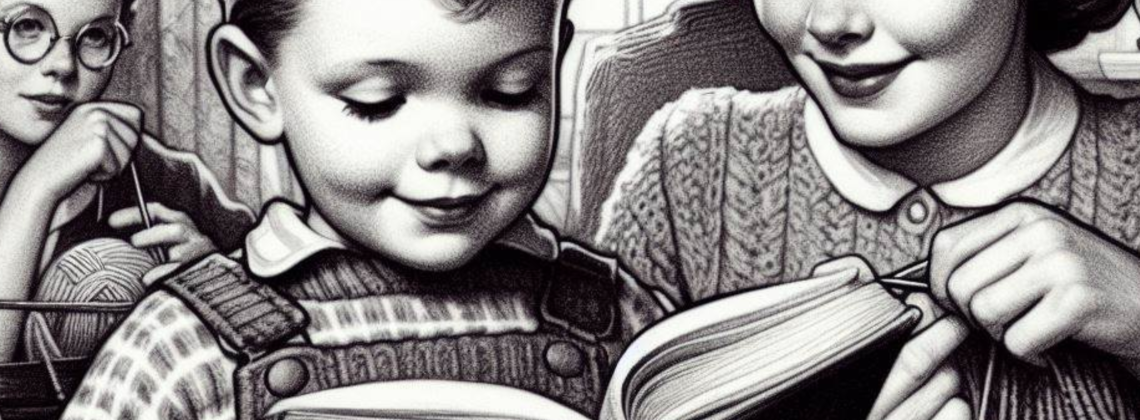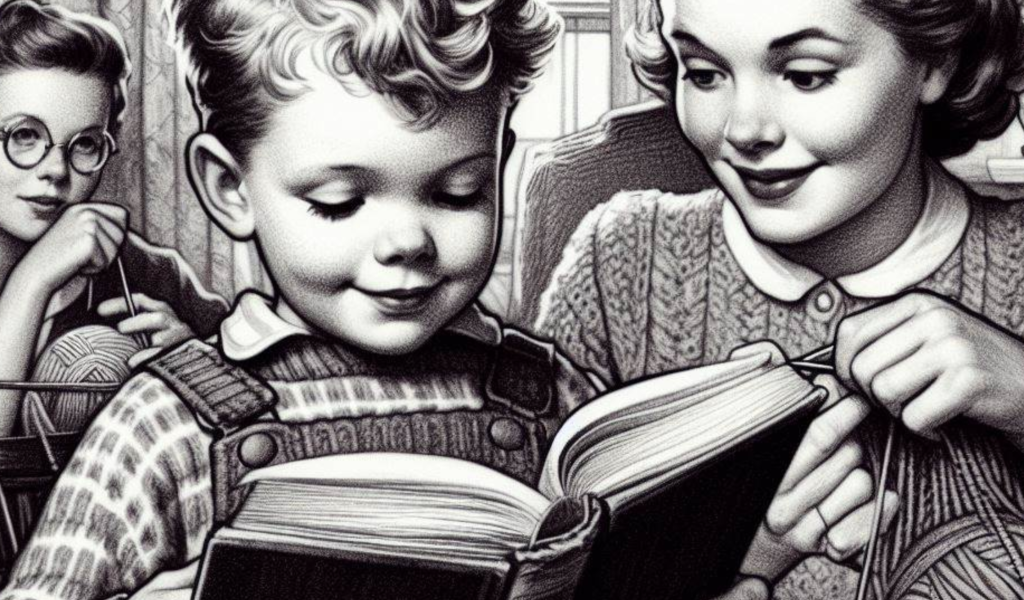

Have your child read to you!
Reading books aloud to your children is a staple of parenting—and for good reason. The vast majority of young children have listening comprehension skills that far exceed their reading abilities. Language development begins in utero. Newborn babies prefer their “mother’s voice over other female voices and show a preference for the language their mother spoke during pregnancy over other languages.” Long before a child learns “C-A-T spells CAT,” she listens to—and then engages in—spoken language. By the time a child turns six, she has spent more than half a decade immersed in oral language, but possibly only a few months trying to read. As a result, a first grader may struggle to read Go Dog Go yet listen with rapt attention to Little House in the Big Woods.
Indeed, reading and listening comprehension are inextricably linked. Academic research indicates that while learning phonics is important, once a child has mastered this skill she must still rely on her listening comprehension abilities to understand written text. The English tongue does not make it easy, as the first stanza of the 1902 poem “Our Strange Lingo” reminds:
When the English tongue we speak
Why is break not rhymed with freak?
Will you tell me why it’s true
We say sew but likewise few?
In many public and private schools, teachers stop reading aloud by third or fourth grade, but this is controversial among professional educators. Some argue that reading aloud should continue into high school:
The Commission on Reading has said that “the single most important activity for building knowledge required for eventual success in reading is reading aloud to children.” Read alouds should be an integral part of every classroom, beginning in preschool and continuing through high school . . . Read alouds support all areas of literacy development, exposing students to new words and grammar, increasing students’ interest in reading and writing, and expanding skills like phonological awareness.
While these benefits apply to children in all schooling environments, read-alouds are a staple of homeschooling. Indeed, experienced homeschooling parents are likely nodding along as I extol the many benefits of this practice.
Alas, most of the reading aloud Chez Greco happens at bedtime, and it is my husband who happily reads aloud chapter books to our older children. In preparation, he sometimes listens to YouTube videos, perfecting a good Scottish burr or experimenting with his “Golem Voice.”
To be sure, I too read to my children. This morning, my six-year-old son cuddled up on my lap as we “buddy read”—or traded reading aloud—pages of Richard Scarry’s Peasant Pig and the Terrible Dragon as his “reading lesson” for the day. After dinner, I read to my eight-year-old son from The Emerald Conspiracy, one of a “Puzzle Adventure” series I loved as a child and am enjoying sharing with him. We also spend significant time listening to audiobooks as a family on car trips. While we are driving, everyone likes longer books than our usual daily routine allows. At home, the outdoors often beckons temptingly and so do the piles of comic books—or, in my case, the dishwasher and washing machine. To the extent you have a vision of homeschooling in which clean, well-dressed, quiet children gather around Mother as she reads aloud with a peaceful expression, this is usually not—for better or worse—a reality in our household.
I was intrigued, therefore, to learn about a different educational technique: asking an older child to read to you. I learned about this strategy from my great-grandfather, Alvin Johnson, in his autobiography, Pioneer’s Progress.
Born in Nebraska in 1874 to immigrant Danes, Johnson was raised on a small working farm. Despite having little formal education before college, he went on to receive a PhD in economics from Columbia. As a graduate student he was so poor he reported that “part of the time I had to live on sea biscuit.” He became a professor of economics and helped found the New School. While at the New School, he created the “University in Exile,” which provided visas to Jewish scholars fleeing the Third Reich. A college professor, he insisted on educating all six of his children at home, believing that “in a home with many children, it is possible to give a child far richer educational fare than a school can give.”
I was struck by his description of how he was introduced to great literature. His mother, a busy farmer’s wife, still had an avid interest in good fiction:
She would have me read aloud to her while she knitted or carded or spun. In the busy periods of farming I might have only an hour or less after supper, most of the year I had two hours or three. It was possible to cover a lot of literature in one to three hours, through half a dozen years. I read aloud to my mother most of the novels of Dickens, half of Thackeray, a third of George Elliot, Hugo’s Les Miserables, Tolstoi’s Anna Karenina and The Kreutzer Sonata. We discussed each character and situation as we encountered it, with no concession to the alleged limitations of the child’s mind.
Johnson’s mother also preferred him to read aloud to discourage “skimming.” She felt that “no book is worth holding in one’s hand unless each chapter, each paragraph, each sentence, means enough to make you stop and think.” For my great-great grandmother:
“One book thoughtfully read meant more to her than a hundred books skimmed.”
I deeply appreciated the wisdom in this approach and have adopted it in educating my own children. To give an example, earlier this week I asked my oldest child to read to me while I chopped vegetables for dinner. We are slowly working our way through a wonderful middle grade science book, The Mystery of the Periodic Table. We made it through fewer than two pages in forty-five minutes. We stopped frequently to discuss and define tricky terms, like distillation.
We were reading about saltwater distillation. The last paragraph contained a nice description of how a tablespoon of salt dissolved into a cup of water can be distilled in a covered pot on the stove by boiling the mixture—the water that condenses on the pot lid is not salty. Since we were in the kitchen anyway, he set up a pot on the stove with some salt water. After a little while, we tasted the condensed water. It was indeed not salty. We considered the evaporation patterns of the salt—he asked why the salt seemed to have crystallized into interesting structures after the water boiled off. I didn’t know. (Should a reader know, please tell me!)
Having never attended any professional school of education, I do not know what—if any—modern pedagogical technique this approach maps onto. Will slow, thoughtful reading during our ordinary days improve my children’s standardized test scores or help ensure they meet the Common Core’s grade level expectations? I don’t know, although I suspect it can’t hurt. I have confidence that it is advancing their education. Parents need a variety of tools in teaching their children. Listening to your child read aloud should, I believe, be among them. It turns out reading aloud is valuable, both when done by the parent and when done by the child.
Ivana Greco practiced for about ten years as an attorney specializing in ERISA and healthcare litigation before becoming a stay-at-home mom during the COVID pandemic. She writes at: https://thehomefront.substack.com.